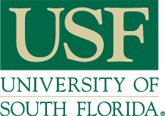Below is a summary of the abstract you submitted. Presenting author(s) is shown in bold.
If any changes need to be made, you can modify the abstract or change the authors.
You can also download a .docx version of this abstract.
If there are any problems, please email Dan at dar78@pitt.edu and he'll take care of them!
This abstract was last modified on March 16, 2021 at 3:34 p.m..

Phage Girr infects bacteria in the genus Mycobacterium. The bacteria that cause tuberculosis, one of the top ten causes of death in the world, is in this genus. Girr is a Siphoviridae, temperate phage with strong lytic activity. Girr belongs to the F cluster and F1 subcluster. Gene 77 is 162 base pairs (bp) long, encoding 53 amino acids. Gene 77 is found in 80 other phages across 11 clusters with high coverage and identity. Gene 77 was predicted to have no known function based on its amino acid sequence, which was run through several programs, e.g., NCBI BLAST, HHpred, TMHMM, and SOSUI. Here, an investigation of gene 77’s ability to kill Mycobacterium smegmatis or to provide immunity against phage infection, was carried out. To do this, the gene was first isolated and multiplied using polymerase chain reaction (PCR), and its identity confirmed using gel electrophoresis then inserted into a plasmid vector named pExTra01. pExTra01 contains a kanamycin resistance gene for selection, an inducible tet promoter, a tet repressor (tetR), an origin of replication for M. smegmatis and E. coli, and an mCherry gene downstream of the insert to confirm expression once it turns the bacteria pink. Gene 77 was inserted by isothermal assembly. The recombinant plasmids were transformed into E.coli, selected for in kanamycin plates, replicated, isolated, and transformed into M. smegmatis. A cytotoxicity assay was conducted on the recombinant M. smegmatis by plating serial dilutions of the recombinant bacteria, inducing the promoter with atc at different concentrations, and comparing the results to a positive control (known cytotoxic gene, Fruitloop gp52) and a negative control (loss of function mutant Fruitloop gp52). The cytotoxicity assay suggested that gene 77 is not cytotoxic to M. smegmatis as could be seen by growth identical to the negative control. Next, an immunity assay was conducted by plating serial dilutions of phage Girr and Mycobacterium phage Larva (temperate, cluster K) onto bacterial lawns of recombinant M. smegmatis expressing gene 77 with a high concentration of ATc and a control plate with no atc to stop the expression of gene 77. The immunity assay suggested that gene 77 does not provide immunity as can be seen by plaques identical to the control. Further research must be done to confirm the function of gene 77. Genetic sequencing of the recombinant plasmid would identify the presence or absence of mutations in the sequence of the insert, e.g., a mutation in the start codon would cause the insert to not be translated while still allowing mCherry to be expressed. A polyhistidine-tag could be designed onto the insert for confirming that gene 77’s protein product is present in the phenotypic assays. A protein-protein interaction assay can also be conducted to ensure that the protein does not require fusion to other proteins to function. We thank Danielle Heller, Vic Sivanathan, and the SEA GENES team for their support of this project.

